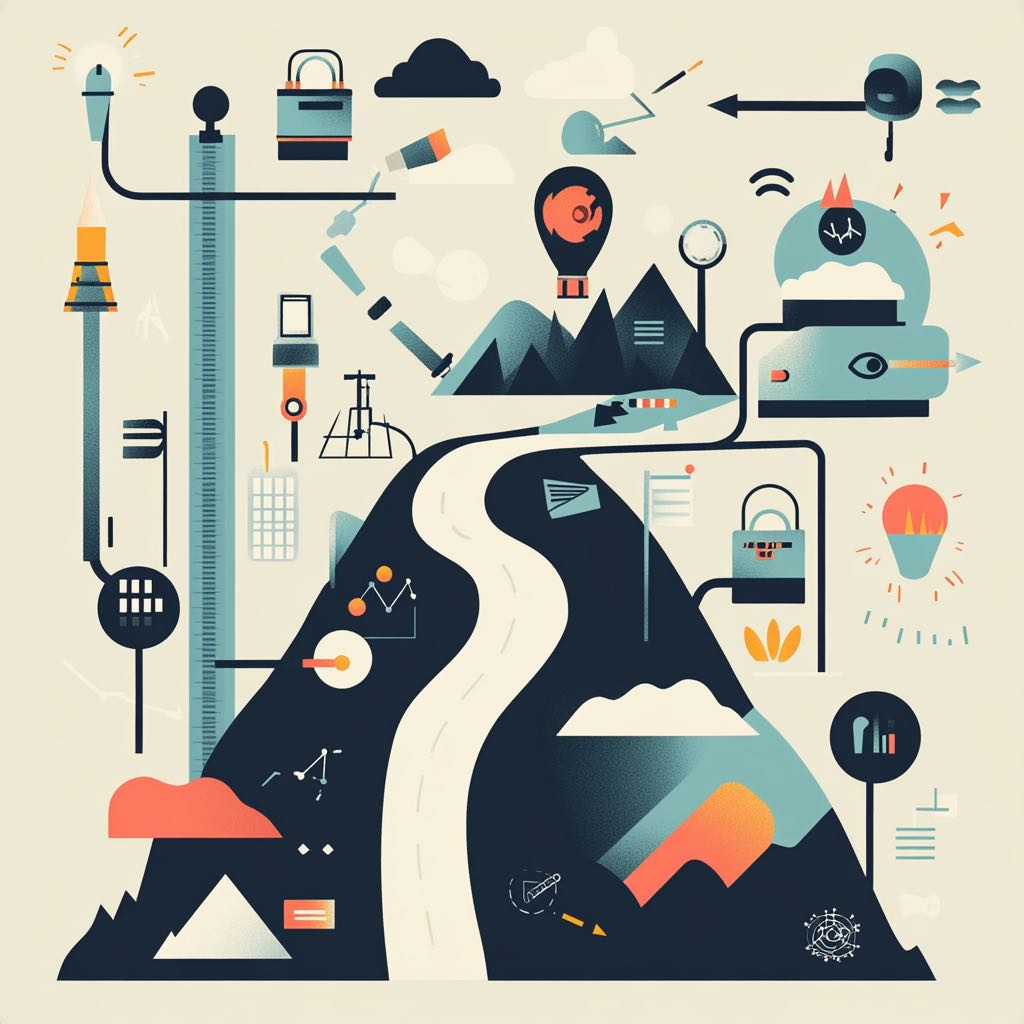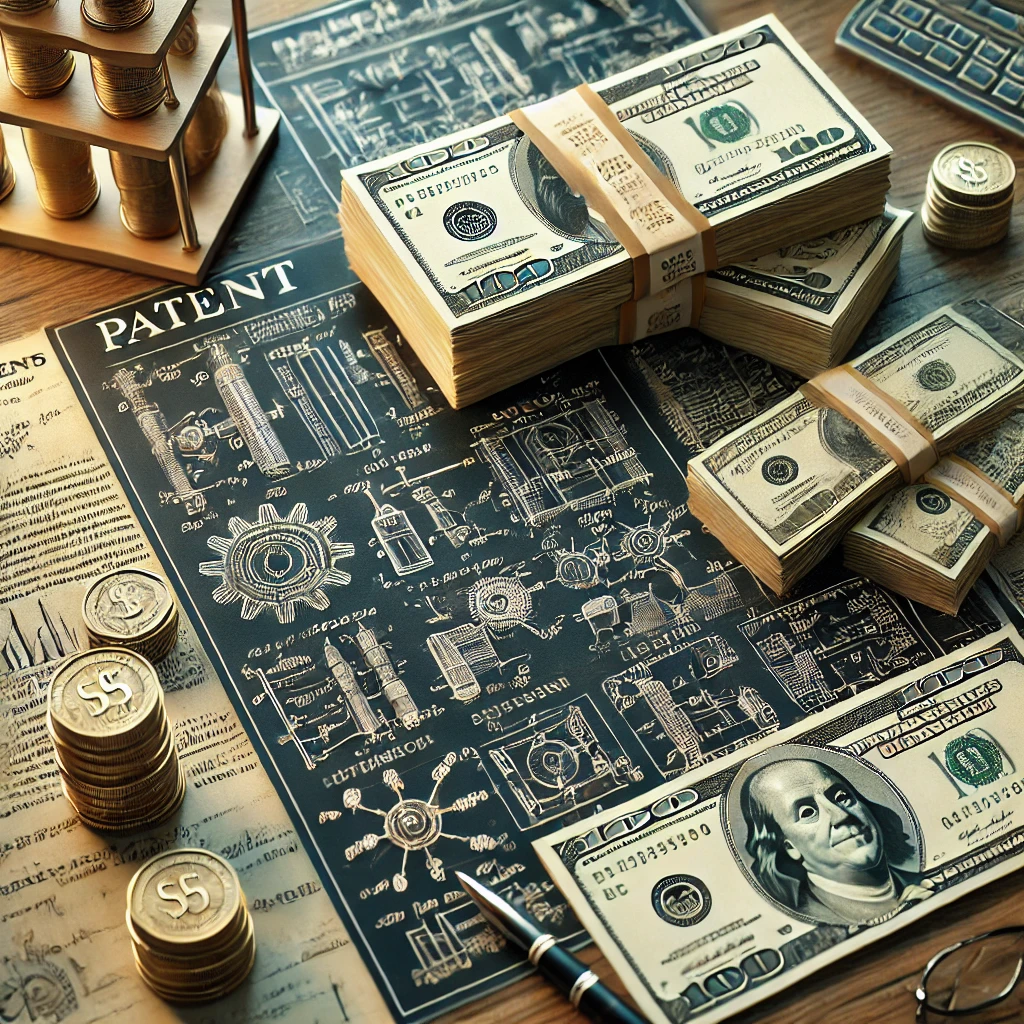Do you have an idea for a groundbreaking new product or technology, but don’t know where to start? You’re not alone. Many aspiring inventors have brilliant concepts, but lack the knowledge, resources, or support to bring them to life. That’s where invention idea help comes in – a wide range of services, programs, and organizations dedicated to assisting inventors at every stage of the process, from concept development to commercialization. In this comprehensive guide, we’ll explore the various types of invention idea help available, how to access them, and how to make the most of these valuable resources to turn your vision into a reality.
Understanding the Invention Process
Before diving into the specifics of invention idea help, it’s important to have a clear understanding of the overall invention process. While every journey is unique, most inventions follow a similar path from initial concept to final product:
- Ideation: This is the stage where you generate and refine your initial idea. It involves identifying a problem or need, brainstorming potential solutions, and developing a clear concept for your invention. During this phase, it’s important to research existing products and patents to ensure your idea is novel and feasible.
- Research and Validation: Once you have a solid concept, it’s crucial to conduct thorough research to validate your idea’s potential. This includes analyzing your target market, assessing consumer demand, evaluating competitive products, and determining the technical feasibility of your invention. Market research can help you refine your idea, identify unique selling points, and estimate potential profitability.
- Prototyping: With a validated concept in hand, the next step is to create a physical or digital prototype. This allows you to test and refine your invention, identify potential issues or improvements, and demonstrate its functionality to others. Prototyping can range from simple sketches and 3D models to fully functional prototypes suitable for user testing. It’s an iterative process that often involves multiple rounds of design, testing, and refinement.
- Intellectual Property Protection: Before sharing your invention with others, it’s crucial to protect your intellectual property. This typically involves filing a patent application, which grants you exclusive rights to make, use, and sell your invention for a set period of time. Other forms of protection include trademarks, copyrights, and trade secrets. A strong IP strategy can help you safeguard your invention, prevent competitors from copying your idea, and increase your chances of securing funding or licensing deals.
- Commercialization: The final stage of the invention process is bringing your product to market. This can involve various strategies, such as licensing your invention to an established company, partnering with manufacturers or distributors, or starting your own business to produce and sell your product directly to consumers. Commercialization requires careful planning, execution, and ongoing management to ensure your invention reaches its target audience and achieves profitability.
Throughout this process, inventors often face numerous challenges and obstacles, from technical feasibility issues and funding gaps to legal hurdles and market competition. That’s where invention idea help comes in – providing the guidance, resources, and support needed to navigate these challenges and increase your chances of success.
Types of Invention Idea Help
There are many different types of invention idea help available, each designed to address specific needs and challenges at various stages of the invention process. Some of the most common include:
- Invention Development Companies: These firms offer a range of services to help inventors develop and commercialize their ideas, including market research, prototyping, patent assistance, and licensing or distribution support. Examples include InventHelp, Davison, and Invent-Tech. These companies often work on a contingency basis, meaning they only get paid if your invention is successfully licensed or sold.
- Patent Attorneys and Agents: These legal professionals specialize in helping inventors protect their intellectual property through patent searches, application drafting and filing, and infringement defense. They can also provide guidance on licensing and commercialization strategies. While their services can be costly, a well-crafted patent application can be crucial to securing your invention’s long-term value and marketability.
- Product Design and Engineering Firms: These companies offer expert assistance with the technical aspects of invention development, such as 3D modeling, prototyping, testing, and manufacturing. They can help transform your concept into a viable, production-ready product. Some specialize in particular industries, such as consumer electronics, medical devices, or industrial equipment.
- Prototype and Fabrication Services: For inventors who need help creating physical prototypes, there are many online and local services that offer 3D printing, CNC machining, injection molding, and other fabrication methods. Examples include Protolabs, Shapeways, and Ponoko. These services can be especially helpful for creating small batches of prototypes or even low-volume production runs.
- Crowdfunding Platforms: Sites like Kickstarter, Indiegogo, and Fundable allow inventors to raise funds for their projects by preselling their products or offering rewards to backers. This can be a great way to validate market demand, build buzz, and secure initial production capital. However, running a successful crowdfunding campaign requires significant planning, marketing, and fulfillment efforts.
- Incubators and Accelerators: These programs provide structured support and resources for early-stage startups, including mentorship, networking, and sometimes funding. Many focus specifically on hardware or technology ventures, such as Highway1, HAX, and TechStars. Participation can be highly competitive, but the connections and expertise gained can be invaluable for bringing your invention to market.
- Inventor Clubs and Associations: Joining a local or national inventor organization can provide valuable networking opportunities, educational resources, and peer support. Examples include the United Inventors Association, the Inventors Association of Arizona, and the Inventors Network of the Capital Area. These groups often host regular meetings, workshops, and pitch events to help members refine their ideas and connect with potential partners or investors.
- Online Courses and Resources: There are countless websites, blogs, podcasts, and online courses dedicated to helping inventors learn about the invention process, from ideation techniques and patent searching to prototyping and marketing. Examples include the Inventors Digest, the Patent Trademark Blog, and the Udemy course “Invention Ideas to Profitable Products.” While these resources can be helpful for self-directed learning, it’s important to verify the credibility and expertise of the sources.
- Makerspaces and Hackerspaces: These community-oriented workspaces provide access to tools, equipment, and expertise for inventors and tinkerers to work on their projects. Many offer classes, workshops, and collaborative events to help members learn new skills and connect with like-minded creators. Examples include TechShop, Artisan’s Asylum, and local Fab Labs.
- Government Resources and Programs: Various government agencies and programs offer support and resources for inventors and entrepreneurs, such as the U.S. Patent and Trademark Office’s Inventors Assistance Center, the Small Business Administration’s SCORE mentorship program, and the National Science Foundation’s I-Corps program for commercializing academic research. These resources can provide valuable guidance, funding opportunities, and access to expert networks.
Each of these resources can play a valuable role at different stages of the invention journey, from helping you refine and validate your initial idea to navigating the complexities of prototyping, patenting, and commercialization. The key is to identify your specific needs and goals, and to choose resources that align with your vision, budget, and timeline.
Choosing the Right Invention Idea Help
With so many options available, it can be overwhelming to know where to start when seeking invention idea help. Here are some factors to consider when choosing the right resources for your needs:
- Stage of Development: Different resources are best suited for different stages of the invention process. If you’re still in the early ideation phase, resources like online courses, inventor clubs, and government programs can be helpful for refining your concept and understanding the overall process. If you have a fully developed concept ready for prototyping and patenting, resources like product design firms, prototype services, and patent attorneys may be more appropriate.
- Technical Complexity: The complexity of your invention can also influence your choice of resources. If your idea involves advanced engineering, specialized materials, or cutting-edge technologies, you may need the expertise of a product design and engineering firm or a university research center. If your invention is relatively simple or low-tech, you may be able to handle more of the development process yourself with the help of online resources and local makerspaces.
- Intellectual Property Strategy: Your approach to protecting your intellectual property can also guide your choice of resources. If you plan to file a patent application, working with a patent attorney or agent can ensure your application is properly prepared and filed. If you’re more focused on other forms of protection like trademarks or copyrights, resources like online legal services or local intellectual property clinics may be sufficient.
- Funding and Budget: Your available funding and overall budget can also constrain your options for invention idea help. Some resources, like patent attorneys and product design firms, can be quite costly, while others, like online courses and government programs, may be free or low-cost. Crowdfunding platforms and grant programs can be helpful for securing additional funding, but they also require significant time and effort to pursue.
- Commercialization Goals: Your ultimate goals for commercializing your invention should also inform your choice of resources. If you plan to license your technology to an established company, resources like invention development firms and licensing agents can be valuable for making connections and negotiating deals. If you want to manufacture and sell your product yourself, resources like incubators, accelerators, and industry associations can provide the mentorship, networking, and infrastructure needed to build a successful startup.
- Personal Fit: Finally, it’s important to choose resources that align with your personal working style, communication preferences, and values. Some inventors thrive on the challenge of figuring things out on their own, while others prefer more structured support and guidance. Some prioritize local, face-to-face interactions, while others are comfortable with remote, digital collaboration. Taking the time to reflect on your own needs and preferences can help you find resources that are a good fit for you.
Evaluating and Selecting Invention Idea Help Providers
Once you’ve identified the types of resources you need, the next step is to evaluate and select specific providers. Here are some tips for assessing the quality, credibility, and fit of potential invention idea help partners:
- Research and Reputation: Start by thoroughly researching the background, credentials, and reputation of any organizations or individuals you’re considering working with. Look for information on their education, experience, and track record of success with previous clients or projects. Check for any red flags like legal disputes, negative reviews, or inconsistent claims.
- Referrals and References: Reach out to other inventors or entrepreneurs in your network for referrals and recommendations. Ask about their experiences working with particular resources and providers, and what they found most valuable or challenging. Follow up with references provided by the organizations themselves to get a more complete picture of their strengths and weaknesses.
- Samples and Case Studies: Request samples of previous work or case studies of successful projects the provider has supported. Look for inventions or clients similar to your own in terms of industry, complexity, and stage of development. Evaluate the quality, professionalism, and relevance of the work to your own needs and goals.
- Initial Consultation: Most reputable invention idea help providers will offer a free initial consultation to discuss your needs and their services. Use this opportunity to ask detailed questions, clarify expectations, and get a sense of the provider’s communication style and expertise. Pay attention to how well they listen to your ideas and concerns, and how clearly they explain their process and deliverables.
- Service Agreements and Contracts: Before committing to work with a particular provider, carefully review any service agreements, contracts, or terms of engagement. Make sure you understand exactly what services will be provided, what the timeline and milestones are, and what the costs and payment terms are. Look out for any red flags like vague deliverables, open-ended timelines, or excessive upfront fees.
- Intellectual Property Policies: If you’ll be sharing confidential information or intellectual property with the provider, make sure you understand their policies and procedures for protecting your rights. Look for clear statements on confidentiality, non-disclosure, and ownership of any work product or inventions that result from the engagement. If necessary, have an attorney review any legal agreements before signing.
- Ongoing Communication and Collaboration: Finally, consider how the provider handles ongoing communication and collaboration throughout the engagement. Will you have a dedicated point of contact? How often will you receive updates and progress reports? What tools and platforms will be used for project management and file sharing? Ensuring that you have clear, consistent, and reliable communication channels can help prevent misunderstandings and keep your project on track.
By carefully evaluating and selecting invention idea help providers based on these criteria, you can increase your chances of finding a partner that is well-suited to your needs, budget, and working style. Remember, the right resource can make all the difference in turning your invention idea into a successful reality.
Making the Most of Invention Idea Help
Once you’ve identified and engaged with the right invention idea help resources for your needs, it’s important to make the most of these valuable partnerships and opportunities. Here are some tips for getting the most value from your chosen resources:
- Be Proactive and Engaged: Don’t sit back and wait for your invention idea help providers to do all the work for you. Take an active role in the process, ask questions, provide feedback, and be open to suggestions and constructive criticism. The more engaged you are, the better the outcomes will be.
- Communicate Clearly and Often: Make sure you have a clear understanding of what services your invention idea help providers will be delivering, what the timelines and milestones are, and what your responsibilities are as the client. Communicate regularly to ensure everyone is on the same page and to address any issues or concerns as they arise.
- Leverage Your Network: Invention idea help resources can also provide valuable networking opportunities, whether it’s connecting with other inventors, meeting potential investors or partners, or getting introduced to industry experts. Take advantage of these connections and use them to expand your own network and knowledge base.
- Stay Organized and Document Everything: Keep detailed records of all your interactions with invention idea help providers, including contracts, invoices, meeting notes, and deliverables. Use project management tools or a simple spreadsheet to track progress, deadlines, and next steps. This will help you stay on top of the process and ensure nothing falls through the cracks.
- Be Open to Feedback and Willing to Pivot: One of the most valuable aspects of invention idea help is getting objective feedback and guidance from experts who have been through the process before. Listen to their insights and be willing to make changes or adjustments to your approach if needed. Sometimes the best ideas evolve through collaboration and iteration.
- Celebrate the Milestones: Inventing can be a long and challenging journey, so it’s important to celebrate the small victories along the way. Whether it’s completing a successful prototype, filing a patent application, or securing your first customer, take time to acknowledge and appreciate the progress you’ve made with the help of your invention idea resources.
- Continue Learning and Growing: The invention process is a continuous learning experience, and there’s always more to discover and improve upon. Take advantage of ongoing educational opportunities provided by your invention idea help resources, such as workshops, webinars, or mentorship programs. Stay up-to-date with industry trends and best practices, and seek out new skills and knowledge that can benefit your invention and your overall development as an inventor.
- Plan for the Long Term: Bringing an invention to market is rarely a quick or easy process, and it’s important to have a long-term plan in place for managing and growing your invention over time. Work with your invention idea help providers to develop a roadmap for scaling production, expanding distribution, and protecting your intellectual property as your invention gains traction. Consider how you will handle challenges like competition, regulatory compliance, and changing market conditions.
- Give Back and Pay It Forward: As you gain experience and success as an inventor, consider ways you can give back to the invention community and support other aspiring inventors. This could include mentoring others, speaking at events, or even starting your own invention idea help resource. By sharing your knowledge and experiences, you can help build a stronger, more supportive ecosystem for invention and innovation.
By following these tips and making the most of your invention idea help partnerships, you can significantly increase your chances of success and bring your invention to life
Real-World Examples of Invention Idea Help Success Stories
To help illustrate the power and potential of invention idea help, let’s take a look at some real-world examples of inventors who have successfully brought their ideas to market with the assistance of these resources:
- The Squatty Potty: This innovative bathroom stool, which helps users achieve a more natural and effective squatting position for better bowel movements, was invented by a Utah-based family seeking relief for a family member with chronic constipation. They worked with a local product design firm to refine their concept and create a prototype, then launched a successful crowdfunding campaign on Kickstarter to fund initial production. The product gained national attention after being featured on Shark Tank and has since become a multimillion-dollar brand sold in major retailers like Bed Bath & Beyond and Target.
- The Oculus Rift: This groundbreaking virtual reality headset was invented by Palmer Luckey, a self-taught engineer and VR enthusiast. Luckey started developing prototypes in his parents’ garage and eventually launched a Kickstarter campaign that raised nearly $2.5 million. He then worked with a hardware incubator called HAXLR8R to refine the design and secure additional funding. In 2014, Facebook acquired Oculus for $2 billion, and the Rift has since become one of the leading VR platforms on the market.
- The Invisawear Smart Jewelry: This stylish line of safety jewelry, which can send emergency alerts and GPS location to designated contacts with the touch of a button, was invented by a team of students at the University of New Hampshire. They participated in the school’s ECenter incubator program, which provided mentorship, workspace, and funding to help them develop and launch their product. They also won several pitch competitions and grants, including the NH Tech Alliance TechOut competition and the Holloway Prize. Invisawear has since been featured in major media outlets like Good Morning America and Cosmopolitan, and has shipped thousands of units worldwide.
These are just a few examples of how invention idea help can take an idea from concept to commercialization, providing the resources, expertise, and support needed to overcome obstacles and achieve success. Whether it’s through crowdfunding, incubators, design firms, or other resources, inventors have more opportunities than ever before to bring their ideas to life and make a meaningful impact.
Challenges and Pitfalls to Avoid
While invention idea help can be incredibly valuable, it’s important to be aware of potential challenges and pitfalls that can arise along the way. Here are a few key things to watch out for:
- Invention Promotion Scams: Unfortunately, there are some unscrupulous companies out there that prey on unsuspecting inventors with promises of fame and fortune, only to deliver little value and leave them with empty pockets. Be wary of any invention idea help provider that guarantees success, asks for large upfront fees, or pressures you to make a decision quickly without time for due diligence.
- Overestimating Market Potential: It’s easy to fall in love with your own invention idea and assume everyone else will too. However, it’s important to be realistic about the market potential for your product and to validate your assumptions with objective research and feedback. Don’t let your passion blind you to the realities of customer demand, competition, and pricing.
- Underestimating Costs and Timelines: Bringing an invention to market almost always takes longer and costs more than anticipated. Be sure to build in contingencies and buffers into your budget and timeline, and don’t assume everything will go according to plan. It’s better to be pleasantly surprised than caught off guard by unexpected expenses or delays.
- Failing to Protect Intellectual Property: One of the biggest mistakes inventors can make is failing to properly protect their intellectual property, whether it’s through patents, trademarks, copyrights, or nondisclosure agreements. Make sure you understand the different types of protection available and take steps to secure your rights before sharing your idea with others or entering into business agreements.
- Not Seeking Professional Guidance: While it’s possible to navigate the invention process on your own, it’s often a false economy to skimp on professional guidance from experienced attorneys, designers, engineers, or consultants. Seeking out qualified invention idea help can save you time, money, and headaches in the long run, and ensure you’re making informed decisions every step of the way.
- Failing to Plan for Production and Distribution: Many inventors focus so much on developing their product that they neglect to plan for how it will actually be manufactured, packaged, and shipped to customers. Make sure you have a clear understanding of the production process, supply chain, and logistics involved in bringing your invention to market, and work with your invention idea help providers to develop a realistic plan.
- Ignoring Regulatory Requirements: Depending on your invention’s industry and intended use, there may be various regulatory requirements and standards you need to comply with, such as safety certifications, labeling guidelines, or environmental regulations. Failing to research and address these requirements early on can lead to costly delays or even legal penalties down the line.
- Giving Up Too Soon: Finally, one of the biggest pitfalls inventors face is simply giving up too soon when faced with challenges or setbacks. The invention process is rarely a smooth or straightforward path, and it’s important to stay persistent, adaptable, and committed to your vision. Don’t be afraid to seek out additional help or pivot your approach if needed, but don’t let temporary obstacles discourage you from pursuing your invention idea.
By being aware of these potential pitfalls and taking proactive steps to avoid them, you can increase your chances of success and make the most of the invention idea help resources available to you.
The Future of Invention Idea Help
As technology and innovation continue to evolve at a rapid pace, so too will the landscape of invention idea help. Here are a few trends and predictions for how these resources may change and expand in the coming years:
- Increased Accessibility and Affordability: As more aspiring inventors and entrepreneurs enter the market, there will likely be a growing demand for accessible and affordable invention idea help services. This could lead to the development of new online platforms, virtual resources, and automated tools that make it easier and more cost-effective for inventors to access the support they need, regardless of their location or budget.
- Greater Specialization and Niche Focus: As the invention landscape becomes more crowded and competitive, we may see a trend towards greater specialization and niche focus among invention idea help providers. This could include resources that cater specifically to certain industries, technologies, or stages of the invention process, allowing inventors to find more targeted and relevant support for their unique needs and goals.
- More Emphasis on Sustainability and Social Impact: With growing concerns around climate change, social justice, and other global challenges, there may be an increasing focus on invention idea help resources that prioritize sustainability, equity, and positive social impact. This could include programs that support eco-friendly materials and production methods, initiatives that aim to democratize access to invention resources, and partnerships with mission-driven organizations and investors.
- Integration of Emerging Technologies: As new technologies like artificial intelligence, blockchain, and the Internet of Things continue to mature and converge, they will likely play an increasingly important role in the invention process. This could include AI-powered tools for ideation, market research, and prototyping, blockchain solutions for intellectual property protection and licensing, and IoT connectivity for real-time data collection and analysis.
- Globalization and Cross-Border Collaboration: With the rise of remote work and virtual communication, inventors will likely have more opportunities to collaborate and access resources from around the world. This could lead to the growth of global invention idea help networks, online communities, and virtual incubators that connect inventors with diverse perspectives, skills, and markets.
- Increased Focus on Commercialization and Market Fit: As the invention landscape becomes more competitive and fast-paced, there may be a greater emphasis on resources that help inventors not just develop their ideas, but also validate their market potential and successfully commercialize their products. This could include more hands-on support with customer discovery, user testing, sales and marketing, and fundraising.
- Greater Government and Institutional Support: Finally, we may see increased government and institutional support for invention and innovation, as policymakers and leaders recognize the economic and social benefits of fostering a thriving invention ecosystem. This could include more funding and resources for public invention programs, tax incentives for invention-related investments, and partnerships between government agencies, universities, and private sector organizations.
As an inventor, it’s important to stay informed and adaptable to these changing trends and opportunities in the world of invention idea help. By being proactive and strategic in seeking out new resources and approaches, you can position yourself for success and continue to bring your ideas to life in new and impactful ways.
Bringing it to life
Bringing an invention idea to life is a challenging but incredibly rewarding journey, filled with obstacles and opportunities at every turn. But with the right help and support, anyone can turn their concept into a reality and make a meaningful impact on the world.
As we’ve seen, there are a wealth of invention idea help resources available to inventors today, from DIY tools and online communities to full-service development firms and institutional programs. By understanding the invention process, identifying your specific needs and goals, and proactively seeking out the resources that align with your vision and values, you can drastically increase your chances of success and bring your idea to market faster and more efficiently.
But it’s important to remember that invention idea help is not a silver bullet or a guarantee of success. Ultimately, the most important factors in bringing your invention to life are your own creativity, persistence, and willingness to learn and adapt along the way. The resources and support systems available are simply tools to help you navigate the challenges and opportunities of the invention journey.
So if you have an invention idea burning inside you, don’t let it stay just an idea. Take action, seek out the help you need, and start bringing your vision to life today. The world needs more innovators and problem-solvers like you, and with the right mindset and resources, there’s no limit to what you can achieve.
As you embark on your invention journey, remember to stay curious, stay persistent, and stay true to your vision. Embrace the challenges and setbacks as opportunities to learn and grow, and celebrate the milestones and victories along the way.
With the power of invention idea help and your own creativity and determination, you have the potential to change the world – one idea at a time. So take that first step, and let’s start inventing the future together.




